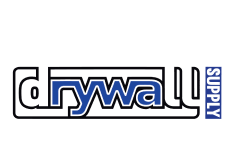[ad_1]
Drywall joint compound, also known as mud, is a vital component in the process of finishing and repairing drywall surfaces. It is used to cover seams, corners, and imperfections, creating a smooth and seamless finish that is ready for painting or wallpapering. In this guide, we will explore the different types of drywall joint compound, its uses, and tips for application.
Types of Drywall Joint Compound
There are several types of drywall joint compound available on the market, each with its own unique characteristics and uses. The main types include:
- All-Purpose Joint Compound: This is the most versatile type of joint compound and can be used for all stages of the finishing process. It dries relatively quickly and can be sanded down to a smooth finish.
- Topping Compound: This type of compound is used for the final coat of finishing. It has a smoother consistency than an all-purpose compound, making it easier to achieve a flawless finish.
- Setting Compound: This compound sets through a chemical reaction, rather than drying through evaporation like other types. It is ideal for quick repairs or projects that require a fast turnaround.
Uses of Drywall Joint Compound
Drywall joint compound has a wide range of uses in the construction and renovation industry. Some common applications include:
- Taping Seams: Joint compound is used to cover and smooth out the seams between sheets of drywall. This creates a flat surface that is ready for painting or wallpaper.
- Corner Bead: Joint compound is used to secure and cover metal or plastic corner bead, protecting corners from damage and providing a clean finish.
- Repairing Holes and Cracks: Joint compound can be used to fill in holes, cracks, and other imperfections in drywall surfaces. It can be applied in layers and sanded down to create a seamless repair.
Tips for Application
Applying drywall joint compound may seem intimidating at first, but with the right tools and techniques, anyone can achieve a professional finish. Here are some tips for application:
- Use the Right Tools: Investing in high-quality tools, such as a taping knife, mud pan, and sanding block, can make the application process much easier and more efficient.
- Prepare the Surface: Before applying joint compound, make sure the surface is clean, dry, and free of dust and debris. This will ensure a smooth and even finish.
- Apply in Thin Layers: It is best to apply joint compound in thin layers, allowing each layer to dry before applying the next. This will help prevent cracking and ensure a smooth finish.
FAQs
What is the best type of joint compound for beginners?
For beginners, an all-purpose joint compound is a good option as it is versatile and easy to work with. It dries relatively quickly, allowing for multiple coats to be applied in a shorter amount of time.
How long does joint compound take to dry?
The drying time of joint compound can vary depending on the type and humidity levels. In general, most joint compounds will dry within 24 hours, but it is best to consult the manufacturer’s instructions for specific drying times.
In conclusion, drywall joint compound is an essential product for finishing and repairing drywall surfaces. By understanding the different types of joint compound, its uses, and tips for application, anyone can achieve a professional finish that is ready for painting or wallpapering.
[ad_2]


